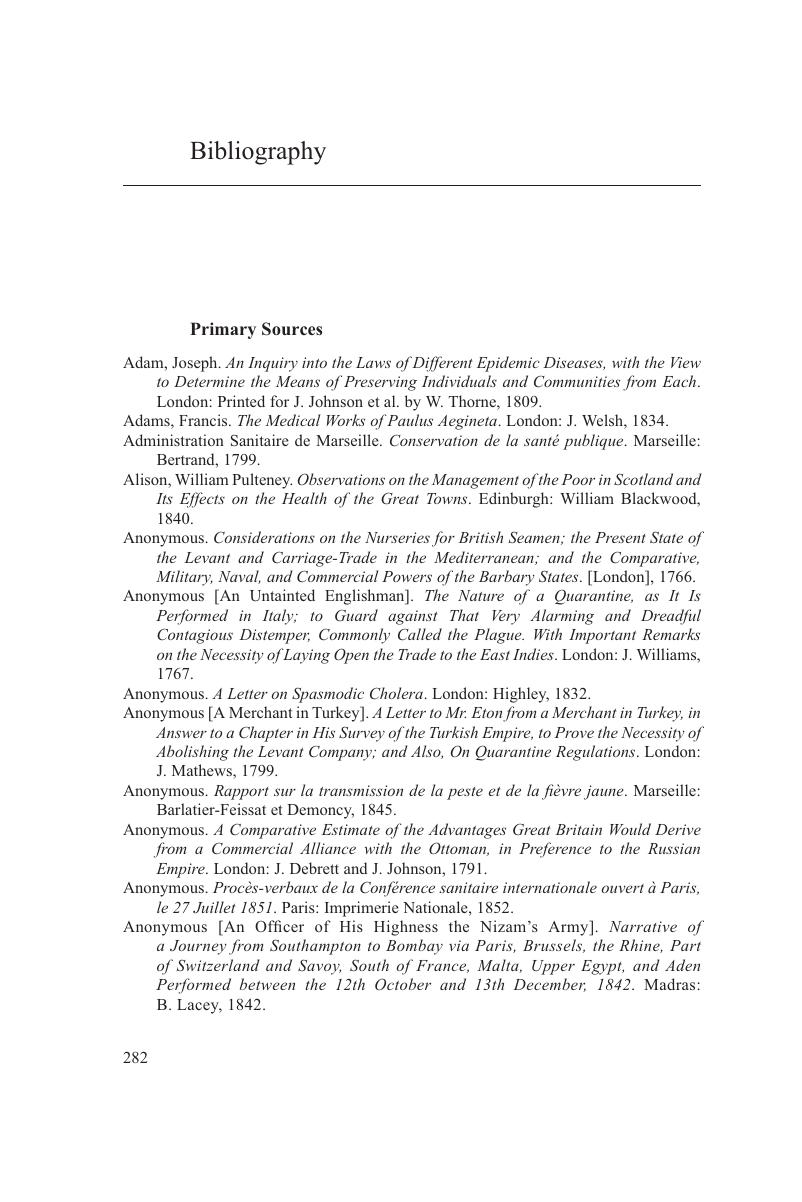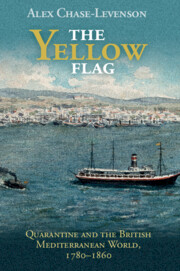Book contents
- The Yellow Flag
- Global Health Histories
- The Yellow Flag
- Copyright page
- Dedication
- Contents
- Figures
- Acknowledgments
- Note on the Text and Translations
- Introduction
- Part I Mediterranean Currents
- Part II Lazarettos, Health Boards, and the Building of a Biopolity
- Part III Imagining the Plague
- Part IV Old Patterns, New Cordons
- Bibliography
- Index
- References
Bibliography
Published online by Cambridge University Press: 27 March 2020
- The Yellow Flag
- Global Health Histories
- The Yellow Flag
- Copyright page
- Dedication
- Contents
- Figures
- Acknowledgments
- Note on the Text and Translations
- Introduction
- Part I Mediterranean Currents
- Part II Lazarettos, Health Boards, and the Building of a Biopolity
- Part III Imagining the Plague
- Part IV Old Patterns, New Cordons
- Bibliography
- Index
- References
Summary

- Type
- Chapter
- Information
- The Yellow FlagQuarantine and the British Mediterranean World, 1780–1860, pp. 282 - 300Publisher: Cambridge University PressPrint publication year: 2020



